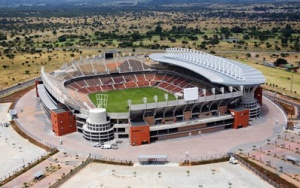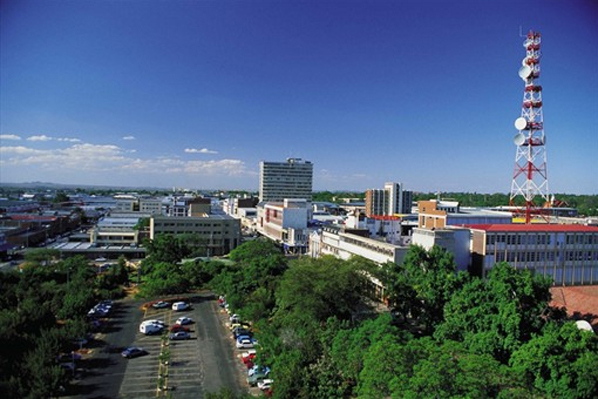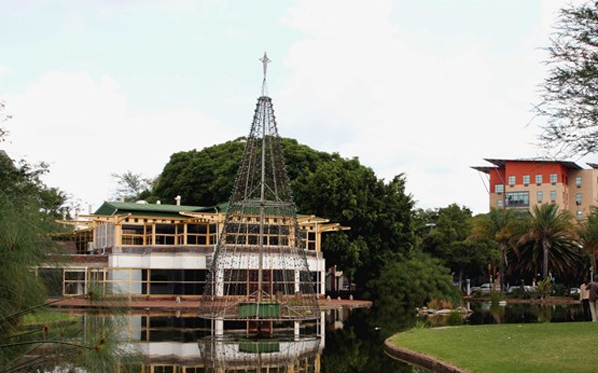World Cup 2010 Preview: Polokwane

Polokwane is often described as a vibrant, busy and colourful wonderland in a sea of grasslands, surrounded by scenic mountains. It is home to many fascinating people and some remarkable cultural diversity.
Place of Safety – as the name translates into English – is situated at the centre of the Limpopo Province and is surrounded by three of South Africa’s neighbours: Botswana, Zimbabwe and Mozambique. It is the economic and cultural hub of Limpopo and is attracts investments into the province.
The region is also the land of the upside down tree known as Baobab, which is the biggest tree in Africa.
Polokwane was previously known as Pietersburg. The area around Polokwane is steeped in mythology and resonates with the sound of the ancient lands. It has seen the history of the Mapungubwe people who flourished during the Iron Age and Modjadji, the Rain Queen.
The Bakone Malapa Northern Sotho Open-Air Museum is a good introduction to the daily life of the dynamic Bakone people. The Bakone people are a highly sophisticated northern Sotho tribe.
The Polokwane Museum, housed in the historic Irish House, has interesting exhibitions including a history of the city and its environs. Here you will find artefacts from the Stone and Iron ages.
There are 4x4 adventure excursions and hiking trails in the Polokwane Game Reserve.

The host city of Polokwane is the capital of the Limpopo Province
Accommodation
Guests looking to explore the surrounding natural heritage of Southern Africa might like to try the Tuli Safari Lodge. Just across the border, the location is recognised by the World Travel Awards as Botswana’s Leading Safari Lodge and offers football enthusiasts an additional dimension to the World Cup visit.
Football
Professional soccer first came to Polokwane in 1995 when Real Rovers were promoted to the country’s Premier Soccer League.
There have been two other Limpopo Province-based sides who have competed at the highest level; Dynamos and Black Leopards. Both these teams have since been relegated to the lower ranks.
Winner’s Park is another popular club in the area and now competes in the First Division.
Stadium
Named after one of the renowned sons of the emancipation of South Africa from the apartheid regime, the Peter Mokaba Stadium holds much historical significance in the country.
The design of the largely concrete structure is inspired by the locally iconic Baobab tree, with the steel structure supporting the roof plane gathered together at each corner of the stadium and supported by giant ‘trunk’ structures which accommodate vertical circulation ramps and service cores.
The stadium was built next to the old Peter Mokaba Stadium in Polokwane in the Limpopo Province. The newly-built Peter Mokaba stadium is situated approximately five kilometres from the city centre, with a total seating capacity of 45,000.
Former African player of the Year, Didier Drogba remains one of the biggest stars to play at this venue when he played for Côte d’Ivoire in a memorable and decisive CAF African Cup of Nations qualifier against South Africa at the old Peter Mokaba Stadium, with the home side prevailing 2-1.

The city is expecting thousands of guests during the 2010 FIFA World Cup
Fast Facts
Name: Polokwane, place of safety
Province: Limpopo
Population: 508,272
Altitude: 1,310m
Geography: 60 kilometres south of the Tropic of Capricorn. The landscape is mainly grassland interspersed with rocky granite hills, referred to as ‘koppies’ in South African English.
Climate: Tropical climate with winter temperatures 20°- 4° Centigrade and summer temperatures between 28-16° Centigrade.
Key Economic Sectors: Agriculture, mining, manufacturing
Professional Football Clubs: Black Leopards, Dynamos, Winners Park (1st Division)
Competitors
Group A: France, Mexico
Group B: Greece, Argentina
Group C : Algeria, Slovenia
Group F: Paraguay, New Zealand
Source: FIFA

